Node-RED is a widely used open-source platform for building and managing complex automation workflows effortlessly. It allows users to visually create and coordinate flows for integrating various services and devices, making it suitable for applications from IoT to data processing tasks. When choosing a hosting platform for Node-RED, opting for Hetzner ensures reliability with its scalable infrastructure and straightforward deployment options. ServerAvatar makes the deployment of the Node-RED on the Hetzner platform an easy step-by-step process.
Create a Server in Hetzner
Getting Started with Hetzner:
Hetzner provides a range of services like dedicated hosting, virtual private servers, colocation services, and domain registration. Hetzner is known for having reliable systems and competitive prices in web hosting. Its services work well for both individual users and businesses that need strong hosting options.
Step 1: Login to Hetzner Cloud Console
- Go to the Hetzner Cloud website and sign in using your credentials.
Step 2: Create a New Project (Optional)
- If you don't have an existing project, create a new one by clicking on the New Project button.
![]()
- Enter a name for your project and click Add Project.
![]()
Step 3: Select a Project
- Select the project in which you wish to create your server.
![]()
Step 4: Create a New Hetzner Cloud Server
- Navigate to the Servers sub-menu and click on Add Server to begin creating your server.
![]()
Step 5: Configure your server
-
Select a Location: Select the data center location where you want to deploy your server. Choose the region that is closest to your target audience for better performance.
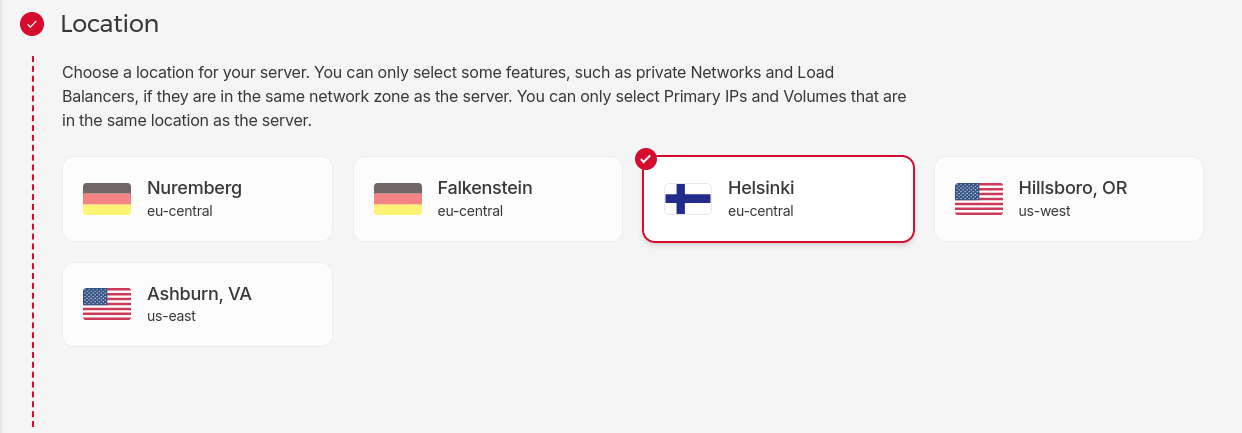
-
Select an Image: ServerAvatar supports both Ubuntu 20.04 and Ubuntu 22.04. Therefore, choose one of these supported operating systems.
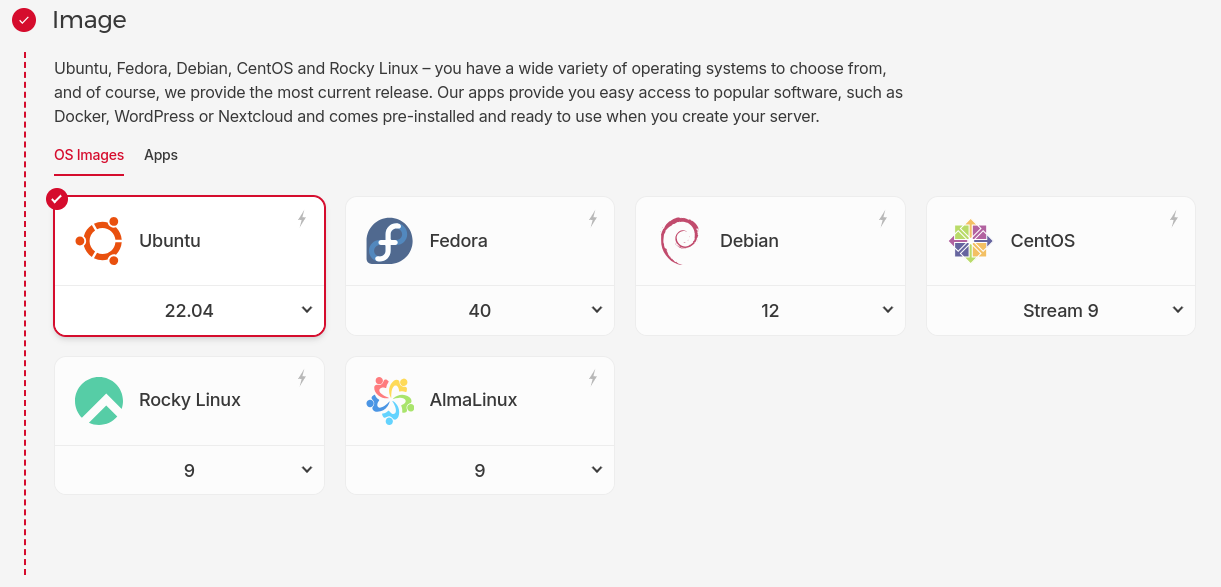
-
Select a Server Type: Hetzner provides various plans with different configurations of CPU, RAM, and storage. Select the server type based on your requirements.
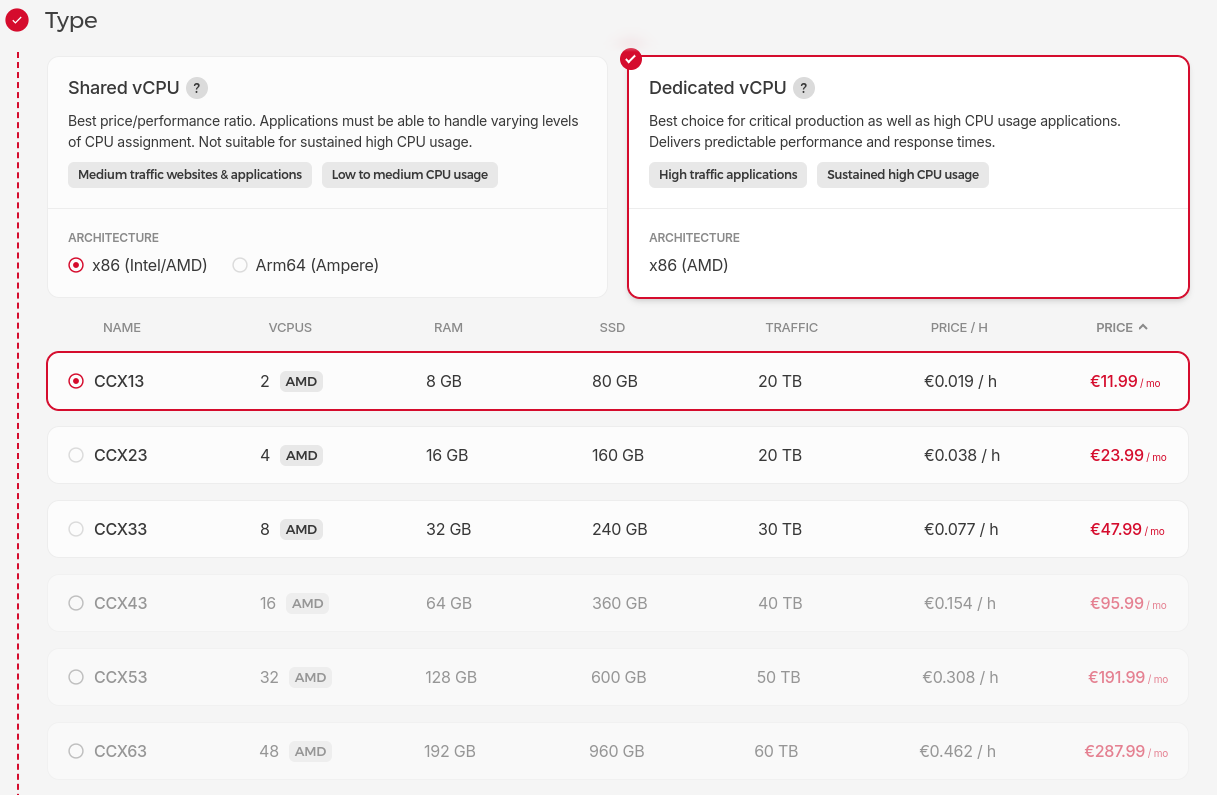
-
Select Networking: Select from three networking options for your server. Private networks allow you to securely connect servers within the same data center without going over the public internet.
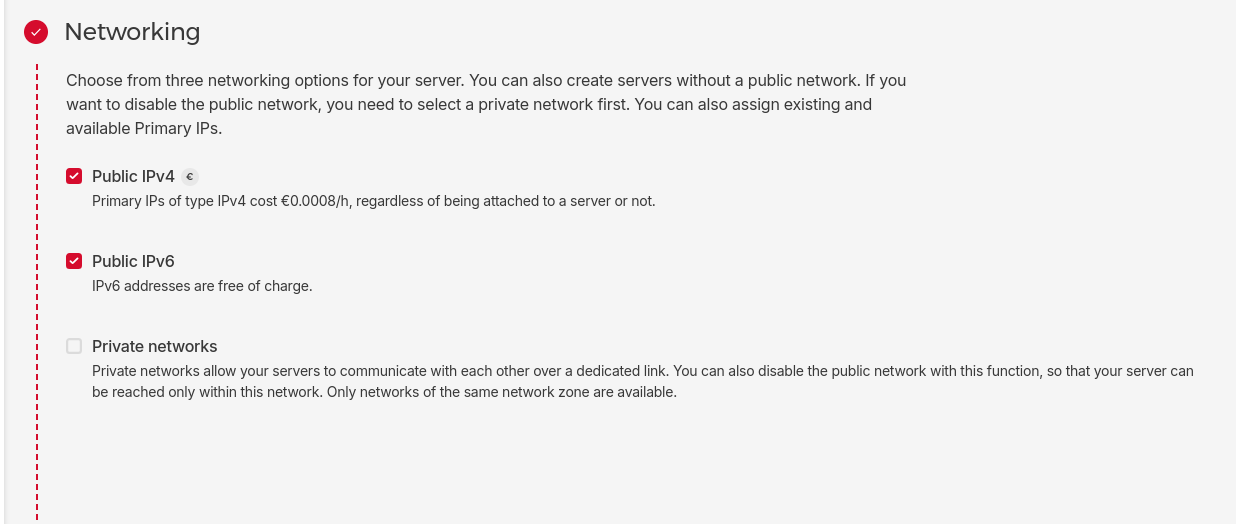
-
SSH Key or Root Password: Select an SSH Key if you want to authenticate with an SSH key. This method is recommended over using a root password for enhanced security. If you choose SSH key authentication, Hetzner will disable password-based authentication by default. Otherwise, you will receive the root password via email.
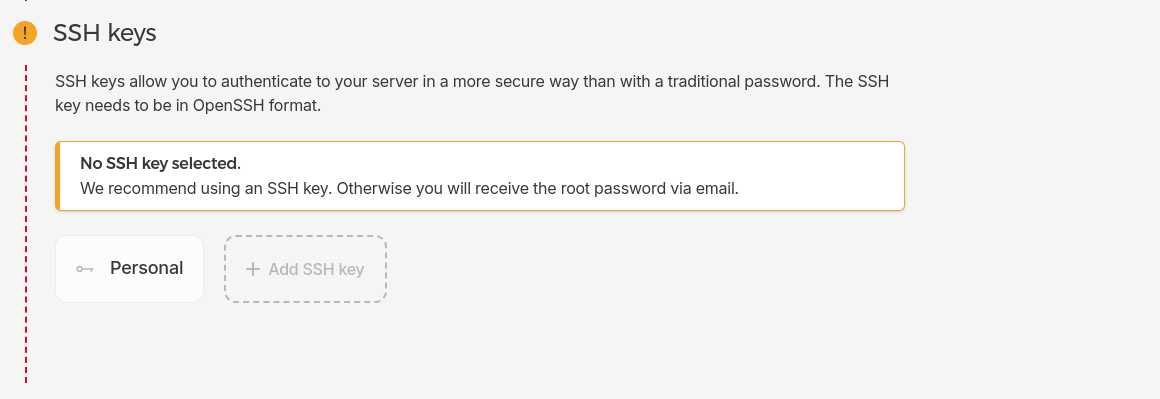
-
Add a Firewall Rule: Configure firewall rules to control incoming and outgoing traffic based on IP addresses, ports, and protocols for improved security.

- Additional Options (Optional): Configure additional options such as Backups, Placement Groups, Volumes, Labels, and Cloud Config as per your Requirements.
-
Give a Server Name: Enter a server name for easy identification.

-
Finalize and Create: Review your configuration settings to ensure that everything is configured correctly. Click on the Create & Buy Now button.9. Finalize and Create: Review your configuration settings to ensure that everything is configured correctly. Click on the Create & Buy Now button.
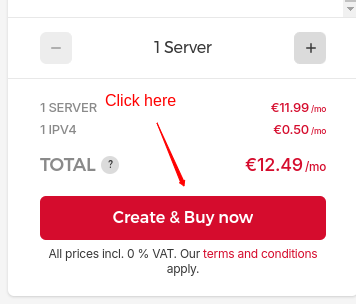
Step 6: Access Your Server
- Once the server is deployed, it will appear on your Hetzner Cloud dashboard. Use the provided IP address and SSH key (if configured) to access your server via SSH. Now, You can connect your Server with ServerAvatar for Server management.
![]()
Initial Server Configuration
The Initial server configuration includes the installation and configuration of various packages required to host your website. Usually, You have to write commands and modify configuration files. Luckily, With ServerAvatar, Your full server configuration and optimization can be automated.
Here are the three ways to automatically configure your server with ServerAvatar.
Connect a server using a direct method
- Login/Register to ServerAvatar account, click the Create button from the right side of the screen, and select Server from the dropdown.
- Select Direct Method in the serve connecting method section.
- Type the Server Name as per your choice.
- Select a Tech Stack as per your need. You can either select Apache, Nginx, OpenLiteSpeed or Node Stack.
- Select a Database: MySQL, MariaDB or MongoDB.
- Enable the toggle if you want to install the latest LTS version of node.js on your server.
- Select a Management plan and click the Connect Now button.
- You’ll see the command on your screen. Login to your server using an ssh connection and execute that command as a root user.
- The server connection process will be started on your ServerAvatar account after executing the command.
Connect a server using integration
- Login/Register to your ServerAvatar account, navigate to the Integration tab from the sidebar of the panel, and access Cloud Platform from the dropdown.
- Now Select a cloud platform you want to link with ServerAvatar.
- The popup form will appear on your screen. Enter details to link your cloud provider account. The integration method is different based on the cloud provider you select.
- You can integrate five different cloud provider platforms with ServerAvatar, which is-
Check the above link of cloud platforms to know more about integrating cloud platforms with ServeAvatar.
Connect a server using commands
Step 1. Login to your server using root user
Once you create a server as per your requirements, connect to your server using an ssh connection and execute the below three commands as a root user in your server console area.
wget https://srvr.so/install
chmod +x install
./install
Step 2. Select a web server
It will ask you which web server you would like to install on your server: Apache, Nginx, OpenLiteSpeed or Node Stack. Type anyone that you would like to install on your server and hit the enter button.
Step 3. Claim your server
Completing the process will give you a link to claim your server.
Open the link on your browser to access the ServerAvatar server panel.
Install and Setup Node-RED on Cloud using ServerAvatar
Getting Started With Node-RED:
Node-RED is a flow-based development tool that utilizes visual programming, developed by IBM. It provides a web-based interface enabling users to integrate hardware devices, APIs, and online services creatively.
Node-RED supports the development of custom nodes using JavaScript, following developers to extend its capabilities and seamlessly integrate with proprietary systems. Its efficient runtime and compatibility with Docker containers ensure easy deployment, whether on cloud platforms or local servers.
Key Features:
- Visual Programming: Node-RED uses a visual programming model, which makes the creation and visualization of complex workflows easier.
- Web-Based Interface: Node-RED offers a web-based interface that is accessible from anywhere, making it convenient for remote development and monitoring.
- Open Source: Node-RED is open-source software, that promotes transparency, collaboration, and innovation within the developers.
- Real-Time Processing: Node-RED enables real-time data processing and supports event-driven applications, making it suitable for IoT and automation projects.
Let's begin by creating the application.
Step 1: Create a Node-RED application
- Log in to your ServerAvatar account and navigate to the Application tab from the server panel. click on the Create button.
![]()
-
On the following screen, fill in the Application details, including:
- Application Name: Enter your Application Name.
- Select Domain: Select between a Test Domain or a Primary Domain as per your requirements.
- Enter Domain: Enter your Application Domain.
- Method: Select One Click as your application method.
- Select Application: Select Node RED as an Application.
- Username: Enter your application Username.
- Password: Enter the Password for your application.
-
After Filling up the details, click on the Create Application button.
![]()
Note: If the Node-RED option is disabled and you are unable to select it, you will need to follow additional provided steps.
- Navigate to the Server Settings option and click on the Install button next to the Node Red option.
![]()
- After completing the installation process of Node-RED, you can proceed with creating the Node-RED application.
Step 2: Access Node-RED
- Once the Node-RED Application is created, click on the domain link of your Node-RED application.
![]()
-
The Node-RED interface will open, showing that the installation and setup have been completed successfully.
- Enter your Username and Password.
- Click the Login button.
![]()
- Congratulations! You've successfully set up a fully functional Node-RED application using ServerAvatar.